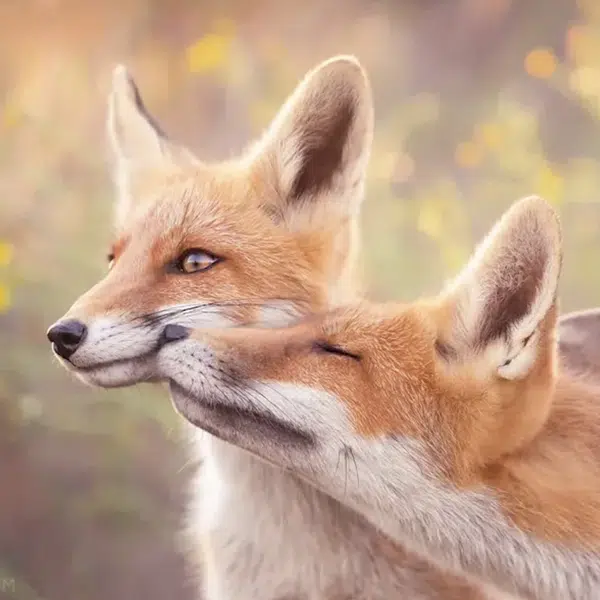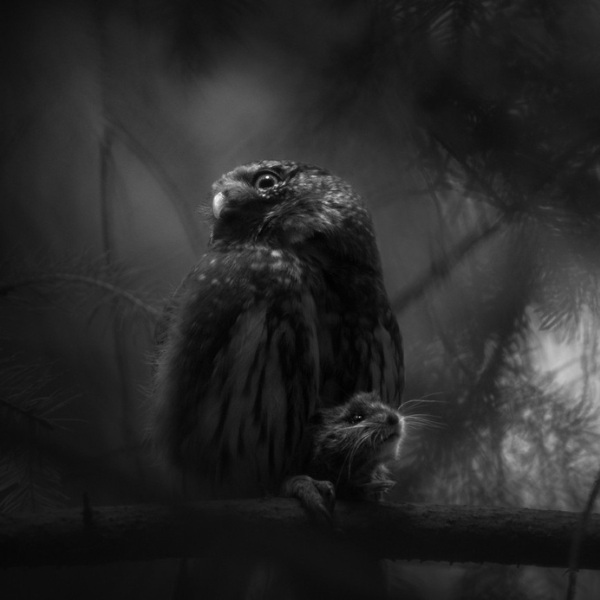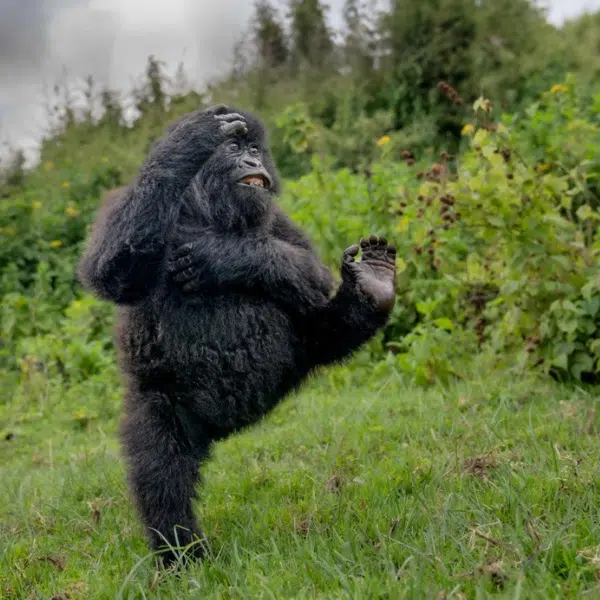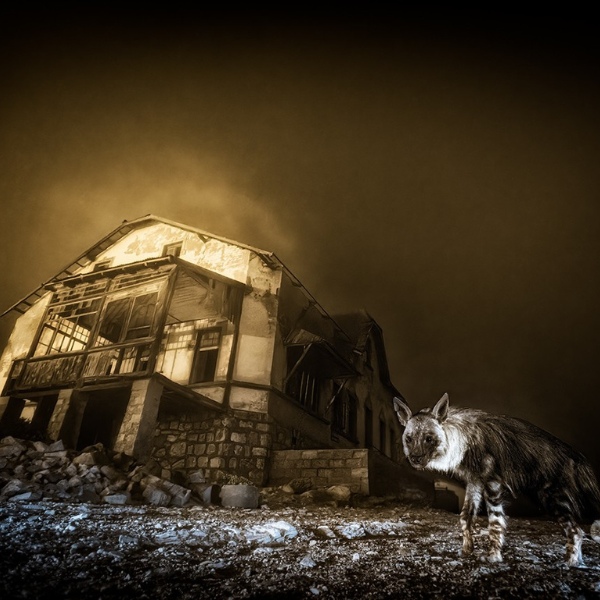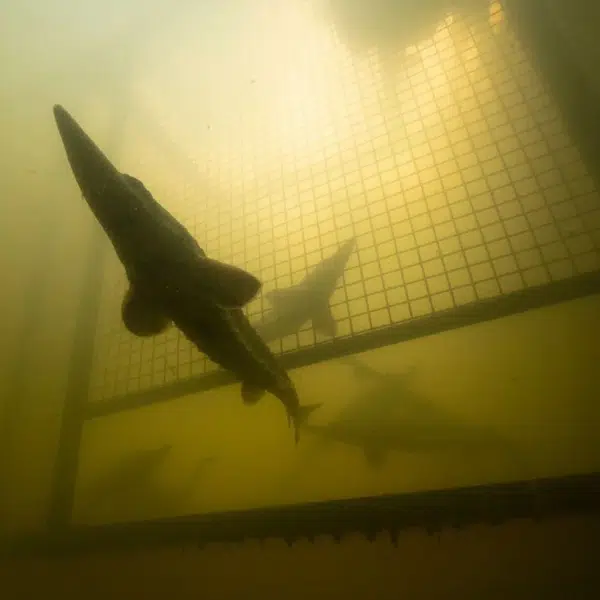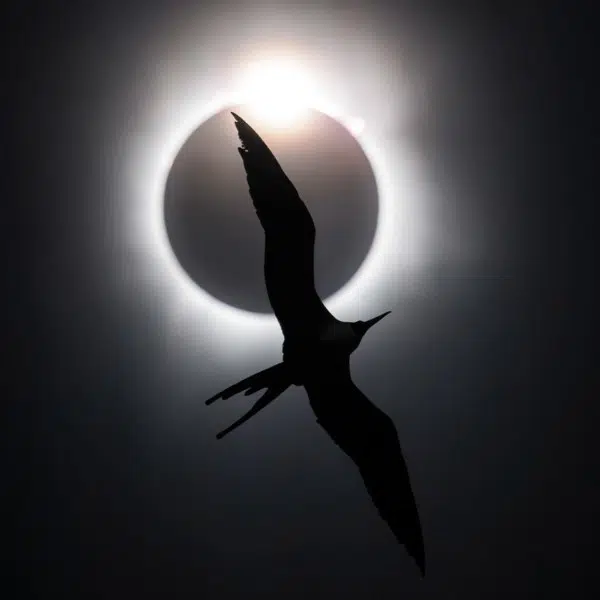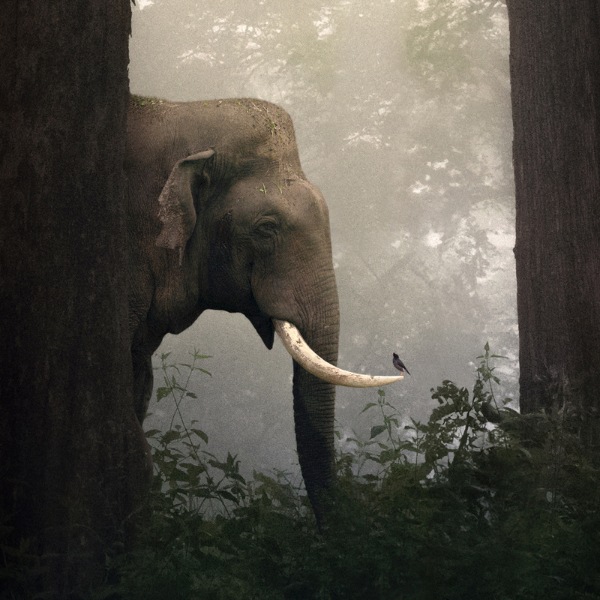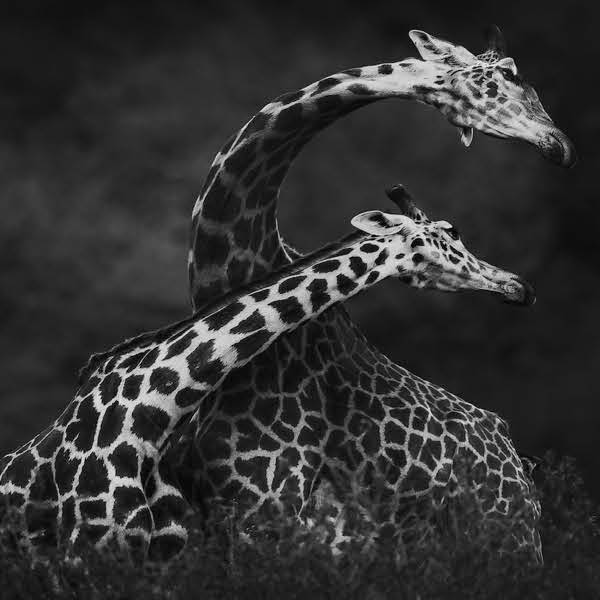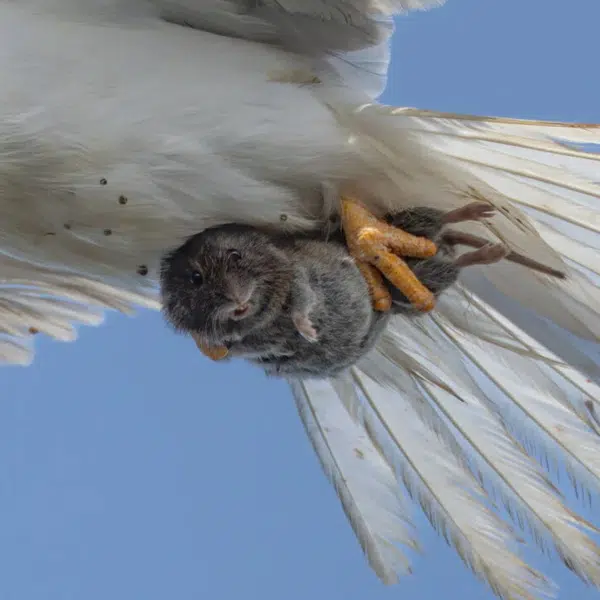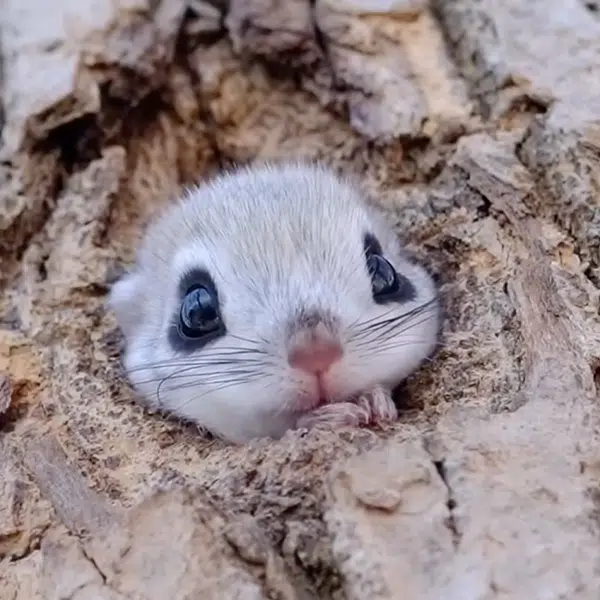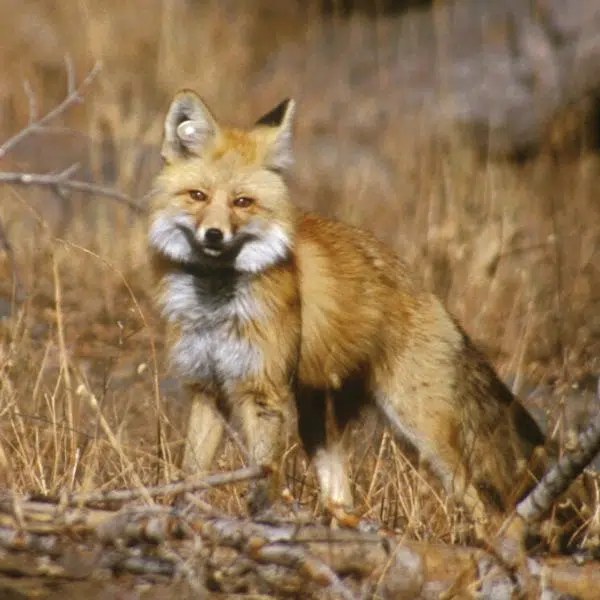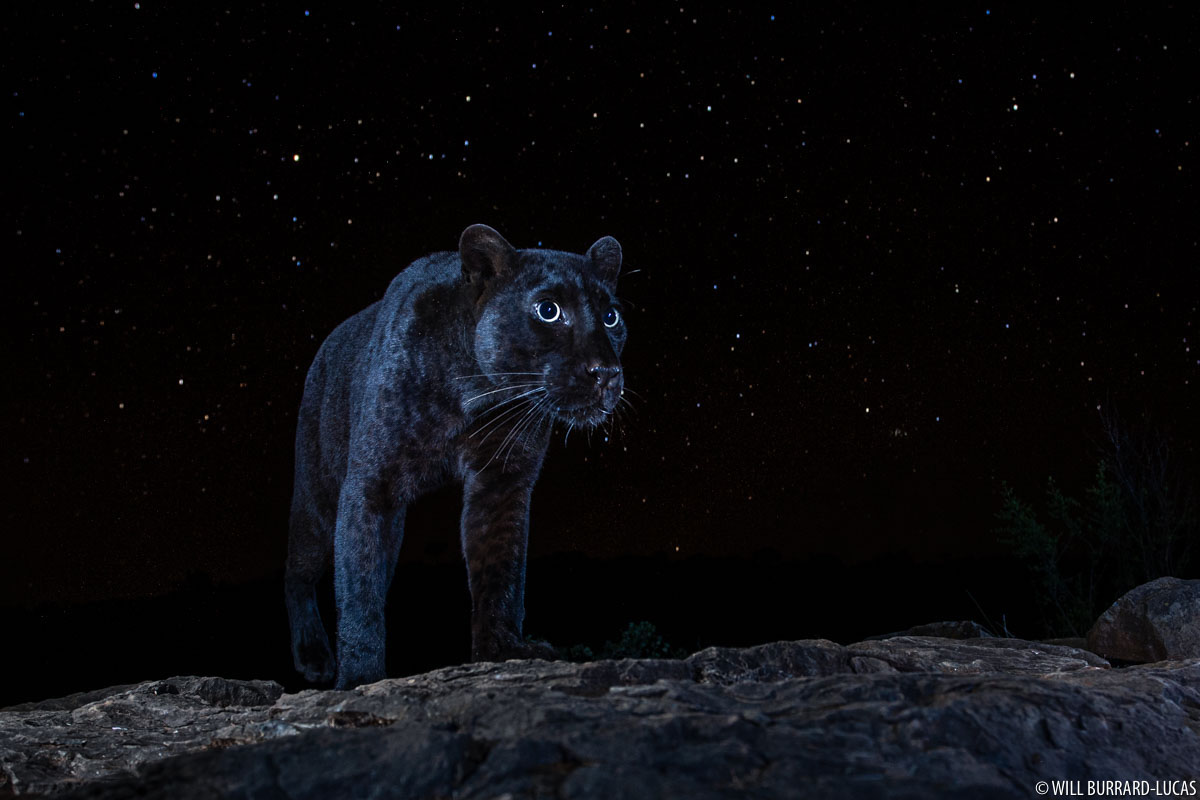
Photo: © Will Burrard-Lucas
This post may contain affiliate links. If you make a purchase, My Modern Met may earn an affiliate commission. Please read our disclosure for more info.
British photographer Will Burrard-Lucas specializes in snapping gorgeous pictures of wildlife at night. The conditions in which to do this, however, make photographing a challenge, and it inspired him to create innovations in camera traps. Thanks to his ingenuity, he now captures these creatures in ways we rarely see. One of his most exciting pictures came in 2019 when he confirmed the existence of the elusive African black panther in Kenya.
After getting the incredible creature on film, Burrard-Lucas didn’t want to stop there. He returned to the country to try and find one again. But this time, he wanted to snap photos of the rare big cat under the cosmos. “Photographing animals with stars in the sky in a single exposure became one of my obsessions,” he writes of the experience. But this is no easy feat. “Photos combining animals with stars are quite challenging to achieve. It took six weeks to get a handful of images of hyena and lions under the stars in Zambia—and those animals were easy to find.” The black leopard would prove to be “both the rarest and most difficult wildlife photo” Burrard-Lucas had attempted thus far.
Because of his first series of successful black panther portraits, the photographer had an idea of where he could find another one. It took a small team working to coordinate the logistics, from the land where Burrard-Lucas deployed his camera traps to keeping the equipment running its best. “At any one time, I now had between five and seven camera traps deployed, and most of them were set up to capture the star shot.”
Logistics were not the only challenge to Burrard-Lucas—it was also the unpredictability of the animal itself. “To make my life more difficult, it seemed the black leopard was now roaming further afield as he avoided a bigger male and sought out a safe territory of his own,” the photographer explains. “He passed by my camera traps much less frequently than in the early days which greatly reduced my opportunities.”
It took a staggering six months to finally get the shot that Burrard-Lucas had been hoping for. “I returned to a cluster of three cameras I had set up on a promising rock. One of the cameras was an infrared DSLR which I had just set up to capture a behind-the-scenes picture,” he recalls. When he checked the other nearby cameras, there were images of the black leopard walking on the rocky terrain with glittering stars in the background. The results are striking and well worth the wait; the cat is almost hidden in the composition with blue tones illuminating its sleek coat.
Burrard-Lucas has included these images in his new book titled The Black Leopard. It’s now available for purchase via Bookshop.org.
Photographer Will Burrard-Lucas captured sight of a rare black panther under the stars.
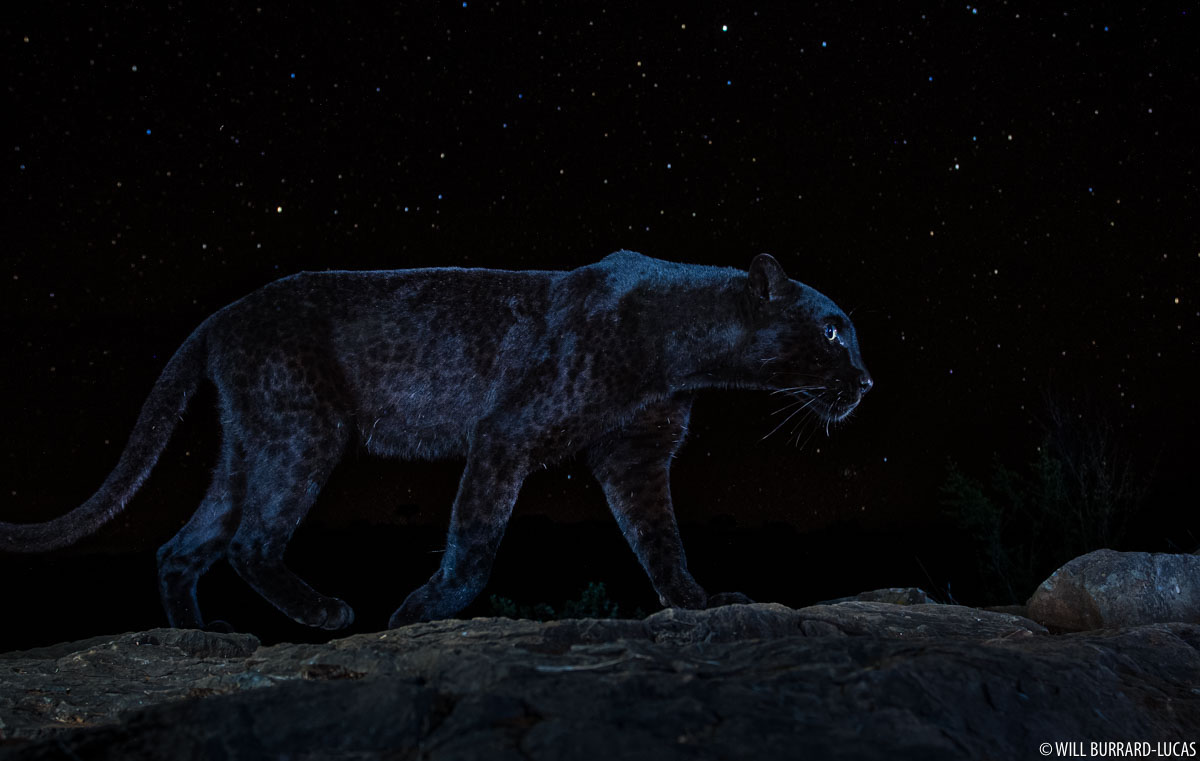
Photo: © Will Burrard-Lucas
It took him six months, and not all shots clearly showed the stars:

Photo: © Will Burrard-Lucas
But when it finally happened, it was worth the wait:
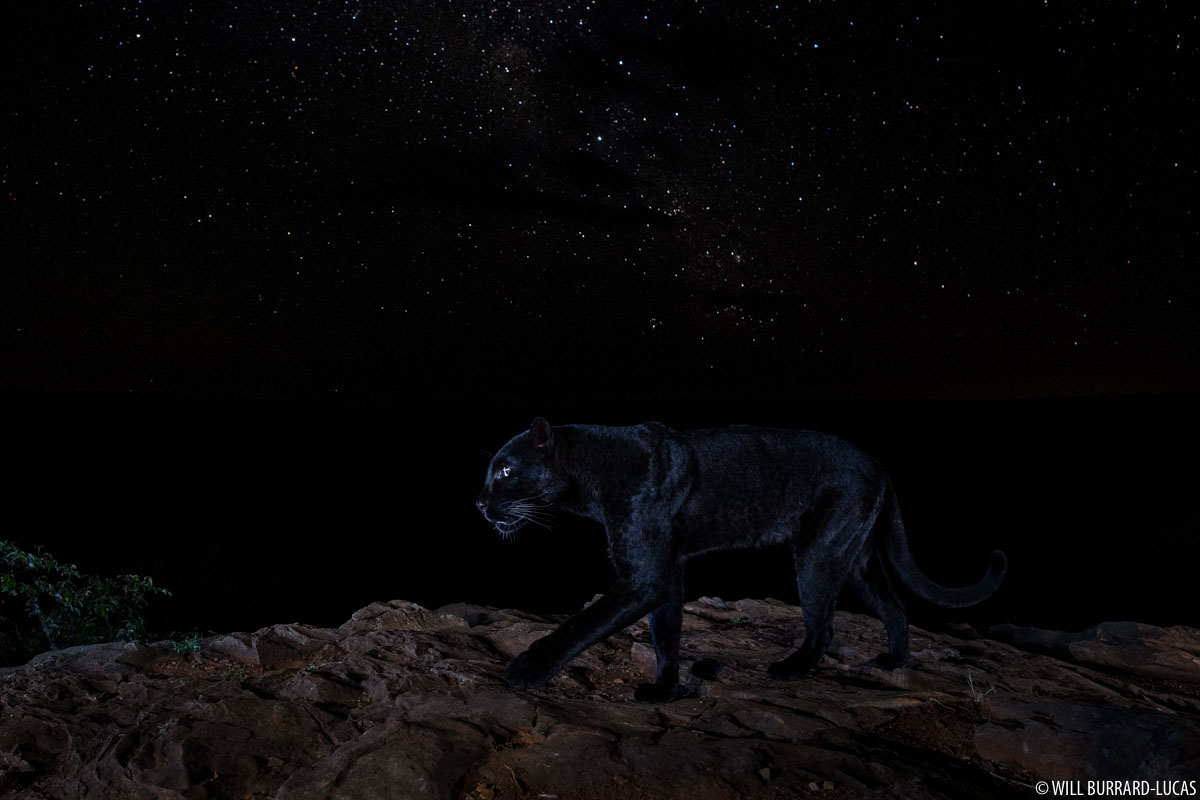
Photo: © Will Burrard-Lucas
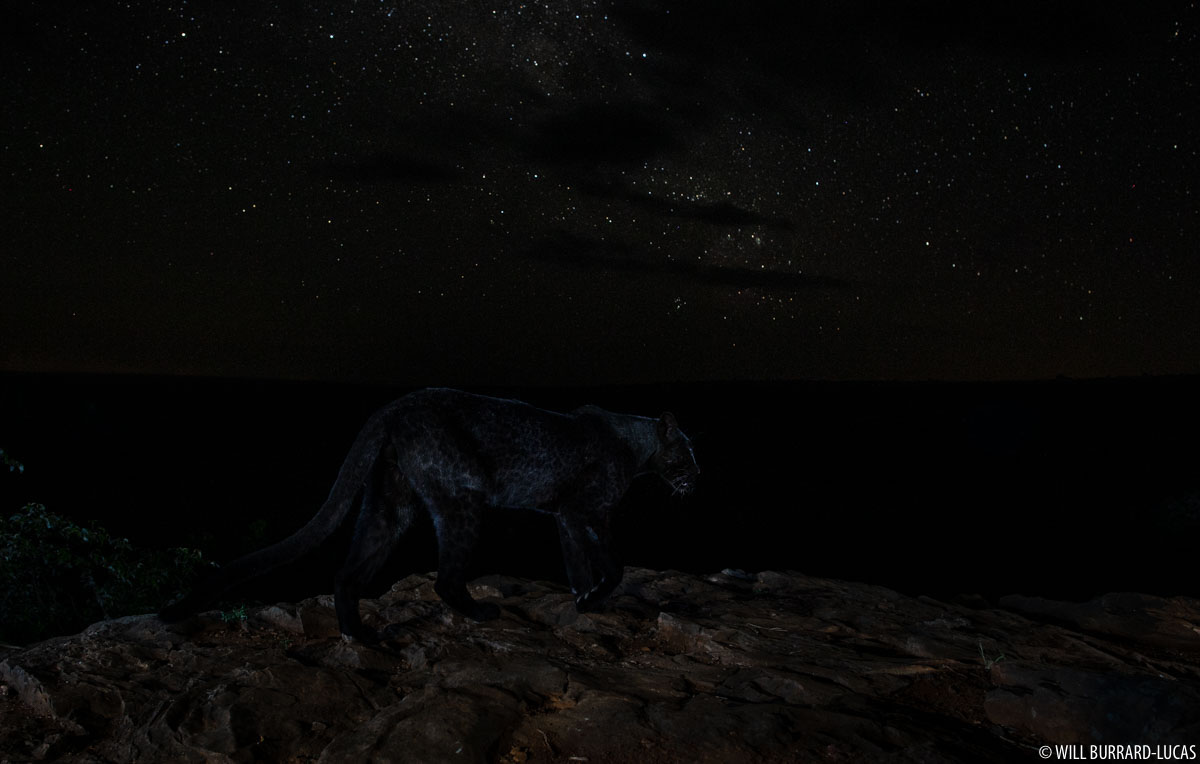
Photo: © Will Burrard-Lucas











































































